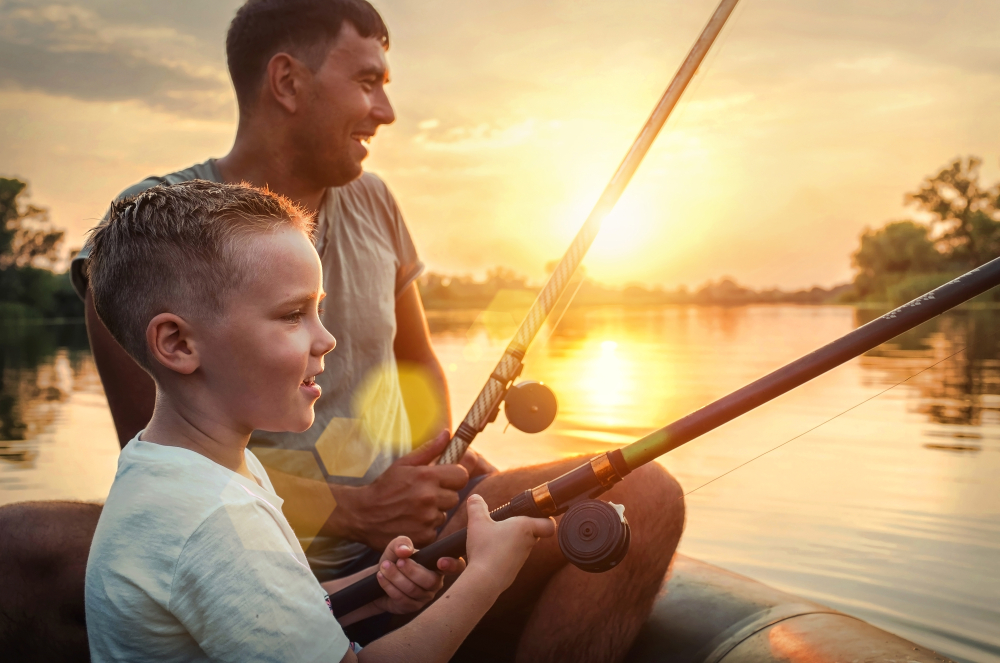Remember the feeling of your first catch?
Your dad or grandpa took you out to the water as a kid and taught you to use an array of foreign shiny objects to reel in that first fish. Now, you want to pass the tradition on to the next generation but you don’t have any fishing gear of your own. Or perhaps you are a complete beginner, fresh from learning the fishing basics online. What now? Let’s get our family involved this summer by starting with the basics.
Fishing is a timeless pastime, with extreme popularity and a $129 billion economic impact. Like most hobbies, you can keep it chill or get as intense as you like when selecting your fishing gear. Going to a sporting goods store and seeing the dizzying array of options can be overwhelming. Let’s talk about some of the basic fishing gadgets you’ll want to invest in as a beginner, and how they can help you and your family become expert anglers.
1. Fishing Rod and Reel
Let’s start with the most essential part of your fishing trip: the rod and reel. This is where you will be tempted to purchase something new and flashy but don’t. Keep it simple, and start with a spinning reel (also known as “open face”) as they are the easiest to use and can hold up to a 20-pound catch. You’ll want to choose something versatile and good for both lure and bait fishing.
2. Line
Another tool you can’t leave the house without is your fishing line. While each type of line has its own specific advantages, monofilament is a good material to start with as it is easier to maneuver than other choices. Bonus points if you practice tying your knots at home with your new line before hitting the water!
3. Hooks and Weights
Before your trip, you need to invest in hooks and weights to set your bait. You can’t catch anything without a hook, and the weight helps hold your bait below the surface of the water. It’s best to have extra hooks in your tackle box as they can easily get damaged, lost, or swallowed by your catch.
4. Bobbers
Also called strike indicators or floaters, the bobber is a great beginner gadget that keeps your bait just below the water’s surface and indicates when the fish has begun to bite. Add a few small bobbers to your tackle box and you’ll know when to start reeling ‘em in.
5. Live Bait and Lures
Now let’s talk about what to bring to tempt your catch. A lot of beginners learn to fish using live bait, and you can get live worms or nightcrawlers from your local bait shop. You can also get your worms the natural way, digging up your next bait from the backyard or garden and putting it in a jar of dirt with breathing holes.
Once you’ve tried your luck with live bait, consider purchasing lures to level up your fishing game. There is an unimaginable amount of sizes, colors, and styles available to you and it’s fun to experiment with different kinds at your favorite fishing spot.
6. Pliers and Cutting Tools
You will need a decent set of pliers to get the hook out of the fish’s mouth, especially if you plan to catch and release. A cutting tool for line cutting is good to have on hand as well. You can get a fancy tool, but a knife or scissors will work just fine.
7. Tacklebox
After you have amassed a wonderful collection of fishing tools and gadgets, you need a place to store it all! Invest in a sturdy tackle bag that will house the entirety of your new collection of lures, or choose several small tackleboxes to categorize them for specific trips.
Conclusion
Last but not least, don’t forget your fishing license! If you are an adult who doesn’t already have one, check out what the laws are in your area and apply for a fishing license in advance.
Whether you are passing on a family tradition or just want to get your kids some fresh outdoor air, get connected with your family this summer and try the great pastime of fishing.












